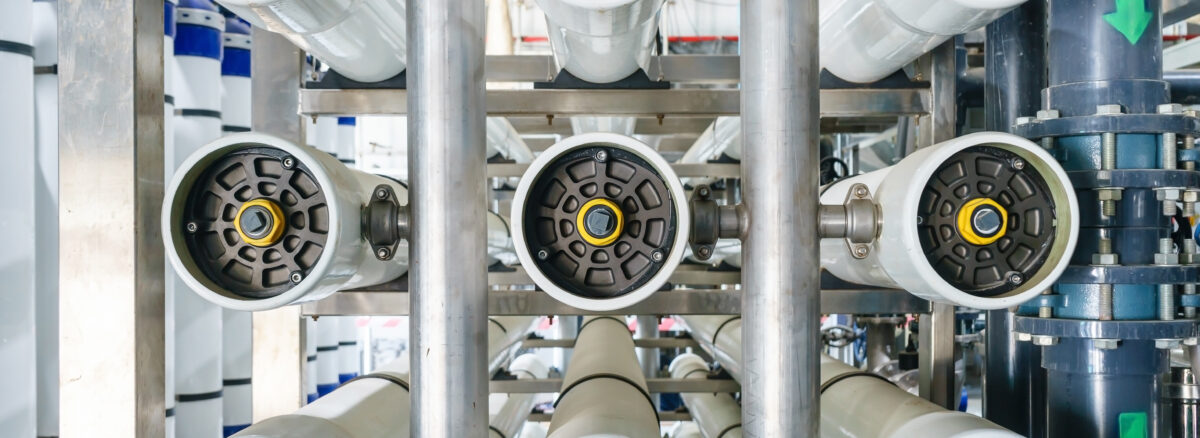- 27 March, 2024
- Francisco Gallego
- Comment: 0
- News

ENERGY EFFICIENCY IN DESALINATION

One of the points on which we focus most at MEP-Projects is the energy optimisation of high-capacity desalination plants for the production of drinking water, bringing together a group of specialised professionals to carry out this type of work, as our clients are increasingly looking to integrate new solutions or improve existing ones with a clear objective: to reduce the cost of water production per cubic metre in relation to energy consumption (kWh).
As a result of our experience in this sector, we have detected the points in the process that require the highest electricity consumption. In this article, we will analyse these needs in depth and address a crucial question: What aspects are essential to optimise the process from an energy efficiency perspective?
INTRODUCTION
Desalination has become a crucial technology for combating freshwater scarcity in many regions of the world. However, the energy consumption of desalination plants is a major factor limiting their economic and environmental viability. Reducing energy consumption in desalination is a key objective to ensure a sustainable future.
ENERGY CONSUMPTION IN DESALINATION
The energy consumption of a desalination plant depends on several factors, including the technology used, the quality of the input water, the capacity of the plant and the environmental conditions. Reverse Osmosis is
the most commonly used technology and consumes around 4-7 kWh/m3 of produced water. Electrodialysis consumes less energy (2-3 kWh/m3), but is less efficient in salt removal.
OPTIONS TO IMPROVE ENERGY EFFICIENCY
- Process optimization:
Improved membranes: The development of more efficient Reverse Osmosis membranes with higher permeability and lower salt rejection can significantly reduce energy consumption.
Energy recovery: The energy of the high pressure water that is rejected in Reverse Osmosis can be recovered by devices such as turbines or pressure exchangers.
Optimised design and operation: Optimising plant design and operation, including the selection of efficient pumps and equipment, can contribute to lower energy consumption.
- Renewable energies:
Integration of renewable energy: Integrating renewable energy sources such as solar PV into desalination plants can significantly reduce the carbon footprint and operating costs.
Hybrid desalination: Combining desalination with other technologies such as solar thermal or freeze desalination can offer more efficient and sustainable solutions.
- Technological innovations:
Nanofiltration reverse osmosis (NF-OI) desalination: This hybrid technology combines NF and RO to reduce energy consumption and improve process efficiency.
Electrodialysis Reverse Desalination (EDR): EDR is an emerging technology that uses special membranes to separate salt water from fresh water without the need for pre-treatment.
Desalination by absorption: This technology uses absorbent materials to remove salt from water, offering a potentially more efficient and sustainable process.
CONCLUSIONS
Process optimisation, the integration of renewable energies and the adoption of technological innovations are key to reducing energy consumption and promoting a sustainable future.
At MEP Projects, we have extensive experience in the detailed engineering design of water treatment plants. We pride ourselves on providing technical studies supported by highly qualified professionals, ensuring optimal solutions in terms of electrical resources to guarantee the efficient operation of the plant.
Made by Fabián García (Electrical Lead Engineer)

